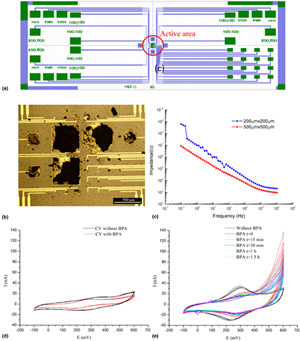Article contents
Electrochemical molecularly imprinted polymers in microelectrode devices
Published online by Cambridge University Press: 27 April 2020
Abstract

This work demonstrated the possibility to integrate electrochemical molecularly imprinted polymers (e-MIPs) on microelectrodes to detect organic pollutants. e-MIPs are a cross-linked polymer with specific target binding cavities with a redox tracer inside. e-MIPs were obtained by precipitation copolymerization of ferrocenylmethyl methacrylate as a functional monomer and a redox tracer with ethylene glycol dimethacrylate as a cross-linker and bisphenol A as a target molecule. FTIR and elemental analysis confirmed the presence of ferrocene inside the polymers. Nitrogen adsorption/desorption experiments and binding isotherms demonstrated the presence of binding cavities inside the e-MIP. The electrochemical properties of the e-MIP were characterized in organic/aqueous media before their patterned on microelectrode.
- Type
- Research Letters
- Information
- Copyright
- Copyright © Materials Research Society, 2020
References
- 4
- Cited by




